- News
- Reviews
- Bikes
- Components
- Bar tape & grips
- Bottom brackets
- Brake & gear cables
- Brake & STI levers
- Brake pads & spares
- Brakes
- Cassettes & freewheels
- Chains
- Chainsets & chainrings
- Derailleurs - front
- Derailleurs - rear
- Forks
- Gear levers & shifters
- Groupsets
- Handlebars & extensions
- Headsets
- Hubs
- Inner tubes
- Pedals
- Quick releases & skewers
- Saddles
- Seatposts
- Stems
- Wheels
- Tyres
- Tubeless valves
- Accessories
- Accessories - misc
- Computer mounts
- Bags
- Bar ends
- Bike bags & cases
- Bottle cages
- Bottles
- Cameras
- Car racks
- Child seats
- Computers
- Glasses
- GPS units
- Helmets
- Lights - front
- Lights - rear
- Lights - sets
- Locks
- Mirrors
- Mudguards
- Racks
- Pumps & CO2 inflators
- Puncture kits
- Reflectives
- Smart watches
- Stands and racks
- Trailers
- Clothing
- Health, fitness and nutrition
- Tools and workshop
- Miscellaneous
- Buyers Guides
- Features
- Forum
- Recommends
- Podcast
£1,000.00
VERDICT:
Thoroughly likeable all-rounder with a killer selling point: hydraulic disc brakes on a £1,000 bike
Weight:
9,700g
Contact:
At road.cc every product is thoroughly tested for as long as it takes to get a proper insight into how well it works. Our reviewers are experienced cyclists that we trust to be objective. While we strive to ensure that opinions expressed are backed up by facts, reviews are by their nature an informed opinion, not a definitive verdict. We don't intentionally try to break anything (except locks) but we do try to look for weak points in any design. The overall score is not just an average of the other scores: it reflects both a product's function and value – with value determined by how a product compares with items of similar spec, quality, and price.
What the road.cc scores meanGood scores are more common than bad, because fortunately good products are more common than bad.
- Exceptional
- Excellent
- Very Good
- Good
- Quite good
- Average
- Not so good
- Poor
- Bad
- Appalling
We've been going on about road bike disc brakes here at road.cc for what seems like ages, but the Pinnacle Dolomite 5 still feels like something of a watershed. Hydraulic disc brakes on a road bike at the key £1,000 price point? That's a first among the bikes we've had in for review. It's a pretty likeable machine, too, which could certainly serve as a commuter or winter bike, and rides well enough to be an enjoyable companion for all-day outings.
It ticks the practicality boxes, too, with mudguard and rear rack compatibility, and also has some unexpected modern touches such as internal cable routing.
> Find your nearest Evans store here
Pinnacle is Evans' in-house brand, and it describes the Dolomite as a "road bike that's designed for UK road conditions". It's fairly tall at the front, with a 200mm head tube, and what Pinnacle describes as "a fine-line between a more upright sportive bike and a performance bike". When I think about what characterises UK riding, the things that spring to mind are poor road surfaces, crap weather and inconsiderate drivers. With space for up to 28mm tyres, fittings for proper mudguards and those brakes, you've certainly got a good starting point.
The range starts at £475 with the Pinnacle 1 and goes up to the Pinnacle 6 at £1,300. All share the same frame (except for cable routing), and all bar the cheapest have disc brakes. This, the Pinnacle 5, is arguably the stand-out, coming with Shimano hydraulic disc brakes for £1,000.
Over the last couple of years we've seen a few manufacturers make wholesale shifts to disc brakes across some of their product lines. Disc brake systems are generally more expensive and so most manufacturers have been rolling them out on the more expensive models first. This is particularly true of hydraulic disc brakes, as the hydraulic-compatible shifters are still fairly new products and so the price hasn't yet come down that far.
For this reason cable discs like the Avid BB7 and TRP Spyre are mostly what you find on commuter bikes around the £1k price point. They're really not bad, but believe us, they are not a match for hydraulics.
The Dolomite 5 has the brand new Shimano RS505 shifters paired with BR785 calliper. We're reviewing the RS505 brakes separately, so I won't go into too much detail here, but having ridden this bike, I really can't see myself buying another cable disc-braked bike.
The ride
Hop on the Dolomite 5 and you'll find it a comfortable and enjoyable ride. At 9.7kg for the XL (Evans claim 8.9kg for the medium) it's no lightweight, but I only really noticed this slowing me down on longer hilly rides. On shorter climbs, it responds well to out-of-the-saddle effort, with the 6061T6 aluminium frame proving acceptably stiff in the places that you want it to be. You wouldn't mistake it for a carbon race platform, but I had no complaints when using it for fast club runs or chaingangs.
It's also a comfortable bike. Forget the old cliché about aluminium being harsh, there are plenty of comfortable aluminium bikes nowadays. Here there are several elements that combine effectively to provide isolation from the cracks and scars in the tarmac, including 25mm tyres – not a huge surprise, with more and more bikes moving to wider rubber – and similarly we are seeing a welcome increase in the use of more slender seatposts; here there's an own-brand 27.2mm-diameter aluminium post.
But the comfort goes deeper than that. The fork is rather lovely – its slender carbon blades help to smooth out the ride with no real loss of tracking stiffness. Routing the front brake hose through the fork leg is very neat, and something generally only seen on bikes costing a lot more.
At the back you don't get ultra-thin seatstays, but rather, the chainstays are slim and with a pronounced bend towards the rear (mostly to facilitate the brake calliper mounting). It works well, resulting in a bike that doesn't beat you up, even over long distances.
Handling is biased towards stability rather than rapier-sharp responsiveness, which suits the bike well. Load it up with panniers on the rear and there are no unwelcome surprises either. The smoothly tapered head tube conceals a 1 1/8in to 1 1/2in headset, increasingly the standard way of beefing up frames at the front.
One thing that struck me was how quiet a bike it is to ride. When you're out in the lanes on your own, there is very little noise to distract you from your thoughts – the freehub is almost silent, the chain glides slickly across the cassette, and the frame tubes are of a sufficient gauge that the road's texture doesn't produce any audible resonance.
The frame
The Pinnacle's frame is 6061 aluminium with a T6 heat treatment – a pretty common alloy for bike frames. As is common on all but the cheapest frames, the tubes are butted, meaning they are thinner mid section and thicken up at the ends. Overall, the wall thickness is greater here than in a super-light aluminium frame, as evidenced by the flick test.
Unusually at this price point, the cables are internally routed, at least through the down tube. There are neat entry points at the top, well positioned to avoid any cable rub on the head tube, and the cables (and rear brake hose) exit by the bottom bracket.
I really like internally routed cables as it makes a frame neater and much easier to clean. Opponents point out that maintenance can be more complicated, but that's hardly the case here – it would be no challenge to fish the cable out of the sizeable opening below the cranks. On some frames the cables exit further back but the arrangement on the Dolomite is an excellent compromise, arguably giving the best of both worlds.
Practicality scores highly, with two pairs of eyelets at the rear axle allowing for mudguards and a rack. Unfortunately the threads were full of paint, needing some careful cleaning out to avoid cross-threading. The frame bosses are all riveted rather than brazed, as you'd expect at this price point.
Fitting a rear rack and mudguards for my commute was mostly simple, although complicated by the hole through the fork crown not being threaded, calling for a really long bolt to hold the mudguard in place. Additionally, I found that the front mech interfered with the rear mudguard, which needed some trimming to avoid issues.
The other bits
Pinnacle has specced most of a Shimano 105 groupset, namely the RS505 shifters, front mech, rear mech and cassette (11-28). The chainset is an FSA Gossamer in a 50/34 compact – a common substitution made to meet a price point – sitting in an FSA MegaExo threaded bottom bracket. I've had my fill of creaky press-fit bottom brackets, so this gets a big thumbs up for me.
Given that you can fit a rack to this bike, the use of a compact chainset and wide cassette makes sense – that's enough gears for you to get up most hills even with luggage on the rear. I was also pleased to see the KMC X11 chain, complete with 'missing link', making it much easier to remove for cleaning than a Shimano chain.
Shifting is a bit of a mixed bag with the new RS505s. On the one hand, the longer lever arm on Shimano front mechs (Tiagra and up) makes for a lovely light action, and the rear derailleur does its business quietly and with the very minimum of fuss. On the other, I'd really like some more feedback when shifting to a smaller sprocket at the rear. Do it attentively and you'll notice the subtle click at the lever to tell you the gear has changed, but some more pronounced feedback would be a big improvement. When you're going hard and need to change up it's easy to stab at the lever and be unsure as to whether you've made the change or not.
For winter use, I have a preference for the single paddle system used by SRAM, as I find with thick winter gloves and/or numb fingers it's all too easy to fudge a shift with Shimano – just catching the brake lever is enough to miss an upshift. Pinnacle has stuck with Shimano across the range, though, and getting 105 and hydraulics at this price will keep a lot of people happy.
More than one person commented on the looks of the new Shimano RS505 shifters, and none favourably. They are rather bulbous, and look a lot less sleek than the more expensive RS685 units. I'd favour the RS685 in terms of comfort too, but I didn't really have a complaint about the RS505s fitted here – they're more than adequately comfy.
The brake callipers themselves aren't the new RS505 units, as these are only available in the new flat-mount configuration, so you get the RS685s with 140mm CenterLock rotors. There's plenty of power available and the absence of friction between the lever and the calliper makes for really excellent feel and modulation.
The wheels are nothing fancy – Alex Draw 1.7p disc brake-specific rims laced to unbranded loose-ball hubs. There's a high spoke count (32) and they're well-built, so should prove durable; certainly they stayed true during testing and gave me no problems at all. According to Alex Rims it's a tubeless-ready rim, although Evans makes no mention of this. Internal width is 17mm and the rim is 23mm deep.
It's really good to see decent tyres fitted – 25mm Continental Grand Sport Race – as this is another area where corners can sometimes be cut to meet a price point. Without mudguards, it'll take up to 28mm tyres.
The bar, stem, seatpost and saddle are all Pinnacle own-brand stuff, and undoubtedly all contribute to the overall heft of the bike, but each did its job well. The saddle, in particular, I hadn't really expected to like, but found I didn't give it a thought, even after longer rides. The bar is a 44cm (c-t-c) on the XL bike but, oddly, feels wider, I think on account of the very tight forward bends, meaning that there's a wider than normal straight section up top. It's a shallow drop with a shape that I found pretty comfortable.
In terms of aesthetics, Pinnacle has stuck with its typical approach, which is unfussy and discreet. It looks better in the flesh than in photos, with the paint a deep and slightly metallic red. The more visible welds have been partially smoothed – not to the extent of Boardman's aluminium bikes, just neatened up a bit. I suspect that if you slapped a big brand logo on this and jazzed up the graphics a bit you could sell it at £1,500 quite easily, which makes it something of a bargain.
> How does it compare? Check out 10 of the best £1000-£1500 road bikes here
Stepping up to the Dolomite 6, at £1,300, gets you an upgrade to RS685 shifters and a 105 chainset, plus a city-friendly black-on-black colour scheme. All are worthy upgrades in my book, although maybe not £300 worth – I'd argue that the Dolomite 5 is the pick of the range.
For me, one of the prime competitors for this bike is another Pinnacle – the new Arkose 3. It's a very similar spec on a heavier-duty frame, suitable for a wider range of terrain, and can take up to 40mm tyres. There's a weight penalty, but for my usage it's probably what I'd pick as a commuter. If you'll be staying on the roads, though, the Dolomite is a cracking choice and at a highly competitive price.
Verdict
Thoroughly likeable all-rounder with a killer selling point: hydraulic disc brakes on a £1,000 bike
road.cc test report
Make and model: Pinnacle Dolomite 5
Size tested: XL
About the bike
State the frame and fork material and method of construction. List the components used to build up the bike.
Frame: 6061-T6 heat treated aluminium, double + triple butted and smooth welds
Fork: Carbon blades w/ alloy tapered steerer
Front Derailleur: Shimano 105 5800
Rear Derailleur: Shimano 105 5800 SS
Number of Gears: 22
Shifters: Shimano 105 RS-505
Chainset: FSA Gossamer compact (s- 170mm, m- 172.5mm, l/xl- 175mm)
Chainrings: 50/34T
Bottom Bracket: FSA MegaExo, 68mm shell, English thread
Cassette: Shimano CS-5800 11-28T
Chain: KMC X11l
Pedals: PP body with toe clips and straps
Brakeset: Shimano BR-785 hydraulic disc brakes
Handlebars: Pinnacle 6061 aluminium short drop bar. drop; 125mm, reach; 70mm, width; s/m 420mm, l/xl 440mm
Stem: Pinnacle road ahead stem. length; s-90mm, m-100mm, l-110mm, xl-120mm
Headset: FSA No. 42/ACB-A, integrated for tapered steerer 1 1/8" to 1 1/2"
Grips: Soft microfiber tape with Vex Gel padding.
Rims: Alex Draw 1.7p, 32h, double walled
Front Hub: Aluminium, loose ball
Rear Hub: Aluminium, loose ball
Front Tyre: Continental Grand Sport Race 25c
Rear Tyre: Continental Grand Sport Race 25c
Tubes: Kenda presta valve
Saddle: Pinnacle race men's
Seatpost: Pinnacle aluminium 350mm x 27.2mm
Accessories: BGRD-4 – spare included
Extra Features: Min/max tyre size – 23-28c (25c with mudguard) full mudguard and rear pannier mounts
Weight: Approx 8.9kg (medium)
Tell us what the bike is for, and who it's aimed at. What do the manufacturers say about it? How does that compare to your own feelings about the bike?
Evans says: "The Pinnacle Dolomite is our award winning road bike that's designed for UK road conditions. For 2016 we have re-developed the frame for disc brakes to increase braking confidence whatever the weather. Still the same geometry which rides a fine-line between a more upright sportive bike and a performance bike that an experienced rider will feel at home on during winter training. With space for 25C tyres with guards or 28C without, it's a bike that can be adapted for all-out speed or a little more comfort. Internal cable routing that's configured for UK brake set ups and ease of maintenance and an extensively butted frame complete the package for a bike with sleek looks and a smooth ride.
"The Dolomite 5 features the new Shimano RS-505 hydraulic brakes, bringing outstanding stopping power at a great price. A 105 drivetrain with FSA Gossamer crankset mean efficient shifting, whilst smooth welds and internal cable routing keep the overall look minimal and sleek."
Frame and fork
Overall rating for frame and fork
8/10
Tell us about the build quality and finish of the frame and fork?
Nicely put together with some modern touches like internal cabling and the tapered headset. More visible welds are partially smoothed. Slightly metallic paint looks good in the flesh; it's quite an unflashy design, looks classy. The fork has been redesigned for 2016 for use with disc brakes, as well as the mounts, and the dropouts are now front-facing.
Tell us about the materials used in the frame and fork?
6061-T6 aluminium is a pretty standard choice for bike frames. Butting the tubes (making them thinner in the middle than at the ends) cuts weight. The fork is made from an undisclosed type of carbon fibre, with an aluminium steerer. More expensive, lighter forks are fully carbon, so this is an example of some cost saving, as you'd expect given the otherwise high spec for the money.
Tell us about the geometry of the frame and fork?
There are only four sizes. I tested the XL, whose 590mm effective top tube makes it a little larger than what I'd normally use – the L is 575mm. The seat tube angle across the sizes is 73 degrees and the head tube angle is 72 degrees except for the small size, where it's 71.5. Chainstay length is 415mm, only 2mm longer than last year's rim-brake model.
How was the bike in terms of height and reach? How did it compare to other bikes of the same stated size?
I'd normally ride a 58cm bike and here I had a choice between a 575mm and 590mm top tube. I went for the XL (590mm) and it was slightly stretched, as I would have expected. It's fairly tall at the front, but as I was recovering from a back injury, I flipped the stem up and it was pretty comfortable.
Riding the bike
Was the bike comfortable to ride? Tell us how you felt about the ride quality.
Yes it was comfortable. The fork in particular seems to do a decent job of filtering out some road buzz, but generally it is a comfortable bike.
Did the bike feel stiff in the right places? Did any part of the bike feel too stiff or too flexible?
You wouldn't mistake it for a carbon race bike but it was stiff enough for just about everything I wanted to use it for. The chainstays look slender by modern standards but it certainly didn't feel too flexy.
How did the bike transfer power? Did it feel efficient?
Yes, no problems unless you're Cav, I'd say.
Was there any toe-clip overlap with the front wheel? If so, was it a problem?
Not a problem – and I've been using it with mudguards too.
How would you describe the steering? Was it lively, neutral or unresponsive? It's fairly relaxed, which suits the bike.
Tell us some more about the handling. How did the bike feel overall? Did it do particular things well or badly?
A good balance, really. It's definitely not as snappy as a race bike, as you'd expect, but that isn't a bad thing.
Which components had the most effect (good or bad) on the bike's comfort? would you recommend any changes?
The slender fork seems to do a decent job at the front, and the frame itself has some compliance at the rear, helped I think by the 27mm seatpost. And 25mm tyres help here too. I wasn't really expecting to get on with the saddle (I'm fussy) but it's perfectly decent – I had no issues with it over 100km or more.
Which components had the most effect (good or bad) on the bike's stiffness? would you recommend any changes?
All worked together fine, really.
Which components had the most effect (good or bad) on the bike's efficiency? would you recommend any changes?
Nothing in particular.
Rate the bike for efficiency of power transfer:
7/10
Rate the bike for acceleration:
6/10
It's not the lightest, and nor are the wheels, but I wouldn't say it was sluggish.
Rate the bike for sprinting:
6/10
This isn't a bike for sprinting but it's certainly sprightly enough for chaingang duties.
Rate the bike for high speed stability:
9/10
Rate the bike for cruising speed stability:
10/10
Rate the bike for low speed stability:
9/10
Rate the bike for flat cornering:
9/10
Rate the bike for cornering on descents:
8/10
Rate the bike for climbing:
6/10
I only really noticed the weight slowing me down when I was doing longer climbs.
The drivetrain
Rate the drivetrain for performance:
8/10
Useful spread of gears and current generation 105 does its job slickly and without fuss.
Rate the drivetrain for durability:
8/10
I wouldn't expect any problems for a goodly while.
Rate the drivetrain for weight:
7/10
You could save a few grams here and there but it's not bad really.
Rate the drivetrain for value:
8/10
Wheels and tyres
Rate the wheels and tyres for performance:
8/10
Wheels are unflashy but well built, and worked flawlessly during testing. Good to see decent quality tyres at this price point.
Rate the wheels and tyres for durability:
8/10
I tested the tyres before and was impressed by their durability.
Rate the wheels and tyres for weight:
5/10
It's an area where you could save weight, for sure, but there's no immediate need to upgrade I'd say.
Rate the wheels and tyres for comfort:
7/10
Hard to isolate from the frame, but the use of 25mm tyres clearly helps.
Tell us some more about the wheels and tyres.Did they work well in the conditions you encountered? Would you change the wheels or tyres? If so, what for?
The biggest tyres you can fit with mudguards is 25mm – you'll get 28mm without. I'd be tempted to fit bigger tyres otherwise.
Controls
Rate the controls for performance:
8/10
Braking is excellent – real clarity and feel. Shifting is generally decent too, but is let down by the absence of feedback when shifting to a smaller sprocket at the back.
Rate the controls for durability:
8/10
Mid-range Shimano kit is generally very well engineered and I wouldn't expect any problems.
Rate the controls for comfort:
7/10
The RS505 units are perhaps not quite as comfortable as the RS685s but they're not bad at all.
Rate the controls for value:
10/10
Shimano 105 and hydraulics for a grand is great news.
Tell us some more about the controls. Any particularly good or bad components? How would the controls work for larger or smaller riders?
Hydraulic brakes are arguably the standout component on this bike and they work brilliantly. Your hands do less work and get less tired over a long ride, and the friction-free transmission of braking force gives real transparency – you can get close to the limit of grip with more control than with rim brakes. Shifting is very slick and efficient too, although the lack of feedback when shifting to a smaller sprocket at the back sometimes left me unsure about whether I'd changed gear or not – this could be improved.
Anything else you want to say about the componentry? Comment on any other components (good or bad)
Threaded bottom bracket is a welcome piece of common-sense. Likewise the fitting of a KMC chain with a quick-link rather than a Shimano one.
Your summary
Did you enjoy riding the bike? Yes
Would you consider buying the bike? Yes, very much so.
Would you recommend the bike to a friend? Yes
Rate the bike overall for performance:
8/10
Rate the bike overall for value:
10/10
Use this box to explain your score
Often, fitting headline grabbing components at a killer price results in serious corners being cut elsewhere, but the Dolomite 5 is a really competent bike with some lovely touches. It's a real coup getting it at the commuter-friendly £1k price point and I expect it'll sell a truckload of them.
About the tester
Age: 37
I usually ride: Commuter - something with disc brakes, drop bars and a rack My best bike is: Rose X-Lite CRS
I've been riding for: Over 20 years I ride: Most days I would class myself as: Expert
I regularly do the following types of riding: road racing, time trialling, cyclo-cross, commuting, touring, club rides, sportives, general fitness riding, fixed/singlespeed, mountain biking
Jez spends his days making robots that drive cars but is happiest when on two wheels. His roots are in mountain biking but he spends more time nowadays on the road, occasionally racing but more often just riding.
Latest Comments
- whosatthewheel 41 min 43 sec ago
Apology means FA. Who cares if he regrets or not. The milk has spilled. I hope the family successfully sues the perp for a massive personal injury...
- don simon fbpe 1 hour 53 min ago
I'm old enough to remember when you could buy an end of season pro bike for 1500 GBP (it's not that long ago).
- slc 2 hours 7 min ago
Madness, isn't it? ...
- Basemetal 2 hours 53 min ago
Watch out for toe overlap (front wheel clearance) with midfoot cleats,
- Safety 4 hours 6 min ago
"So now you're saying that being in that family - even by marriage - makes you more likely to commit a traffic offence?"...
- neilwheel 5 hours 1 min ago
Will those wide rim brake models fit inside a shimano 40-49mm brake caliper with 28mm max clearance??? Gonna be a squeeze...
- rivitman 4 hours 56 min ago
The fact is that many have who have relied on the extra business BTW brings in but then find they cannot cover their overhead with significantly...
- Simon E 5 hours 11 min ago
I'd be even more concerned about the effect it may have on whether the helmet can still do its job in the event of an impact....
- mdavidford 6 hours 54 sec ago
Even if true, it's not an essential flaw in the argument, because the whole thing about shared spaces was merely an aside to the argument.
- Destroyer666 7 hours 42 min ago
I think someone at the office has pulled a prank on less informed road.cc reviewers: First a review of Effetto Mariposa's helmet liners and now a...





































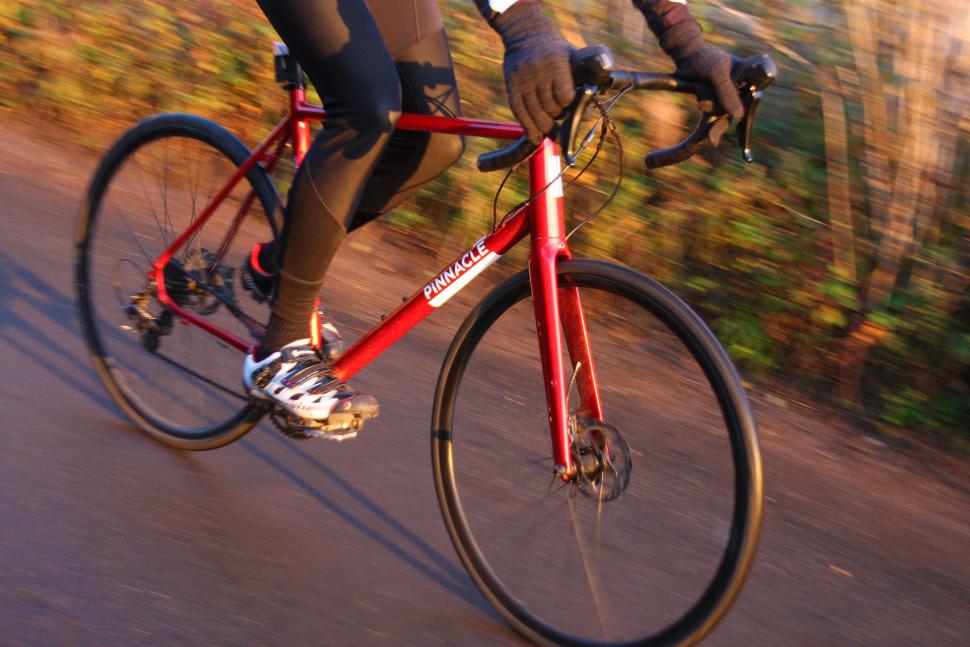

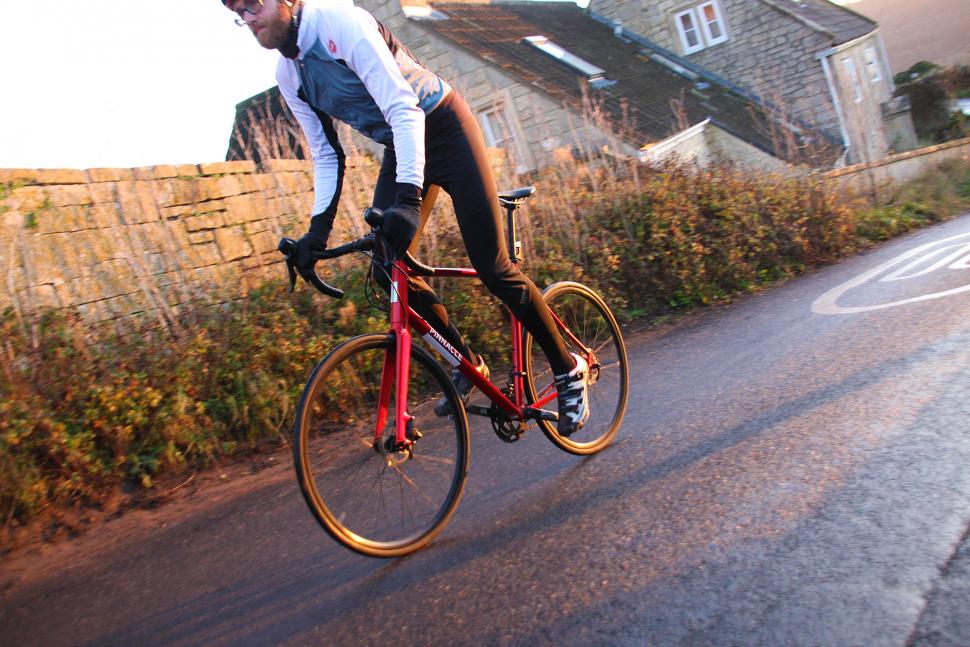

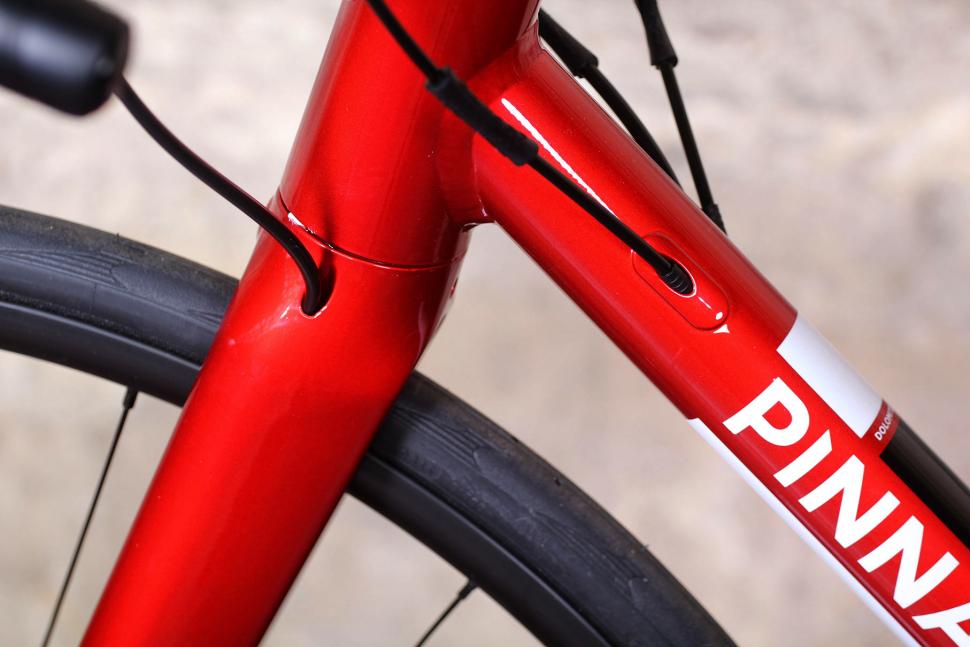

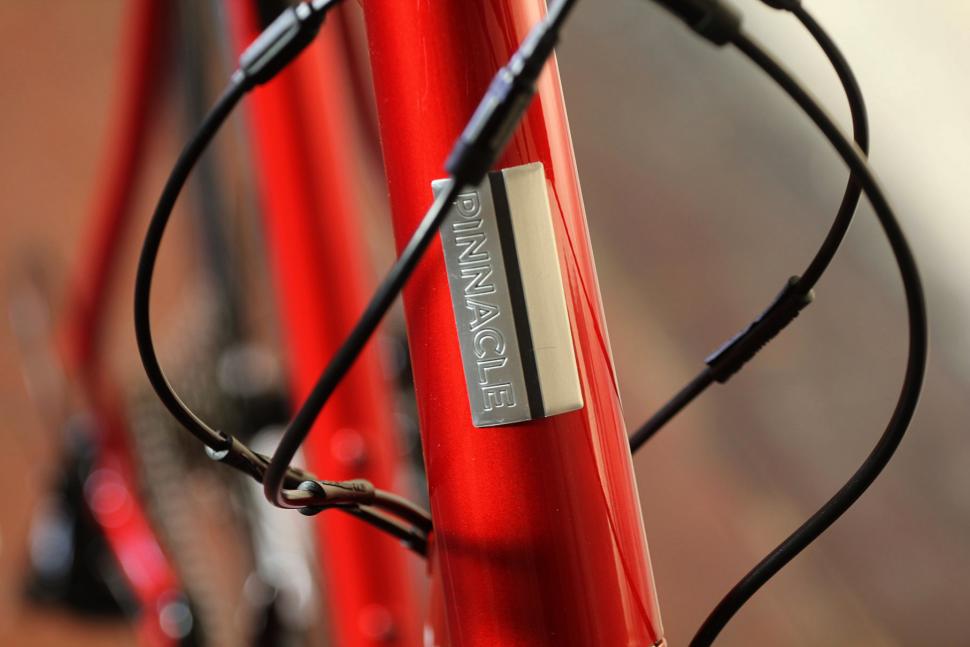


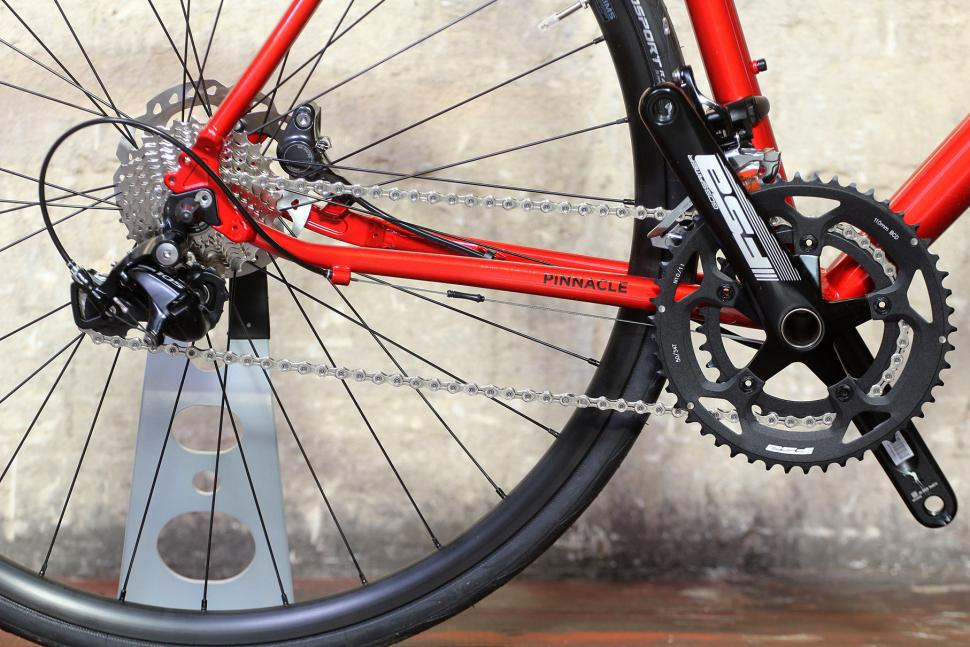
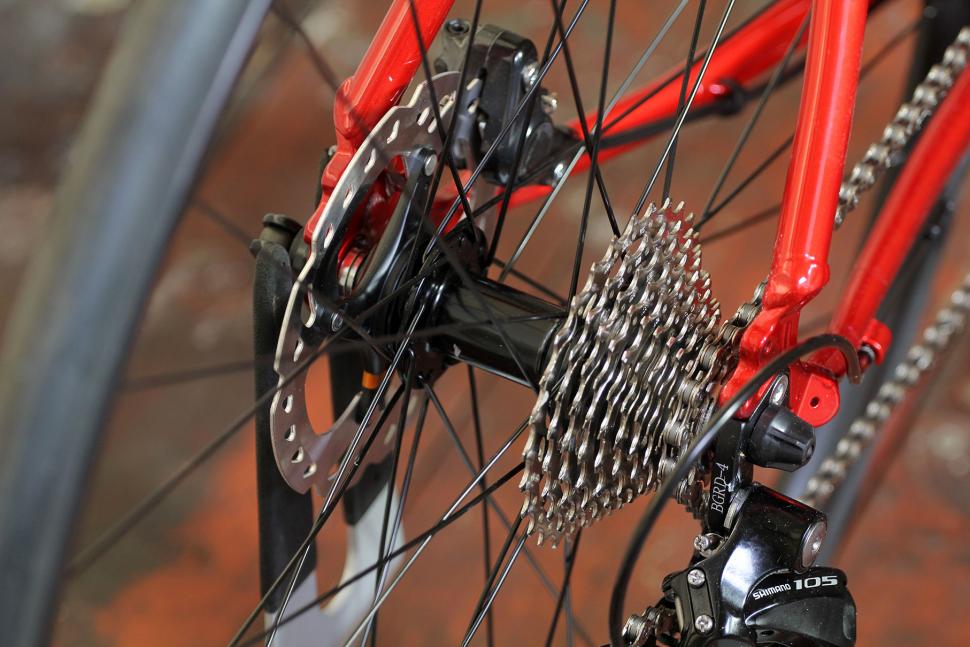

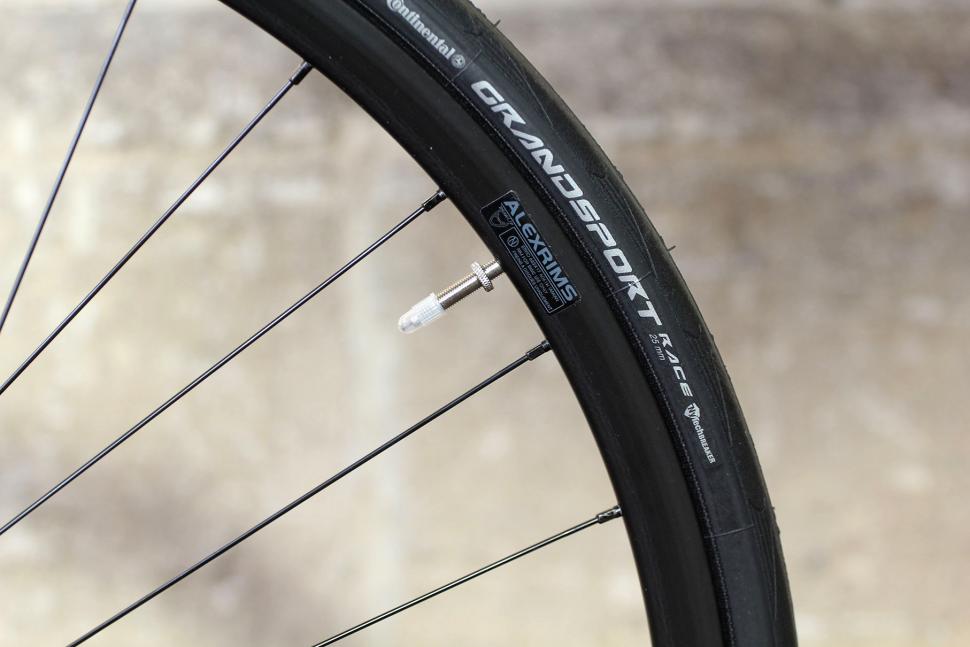

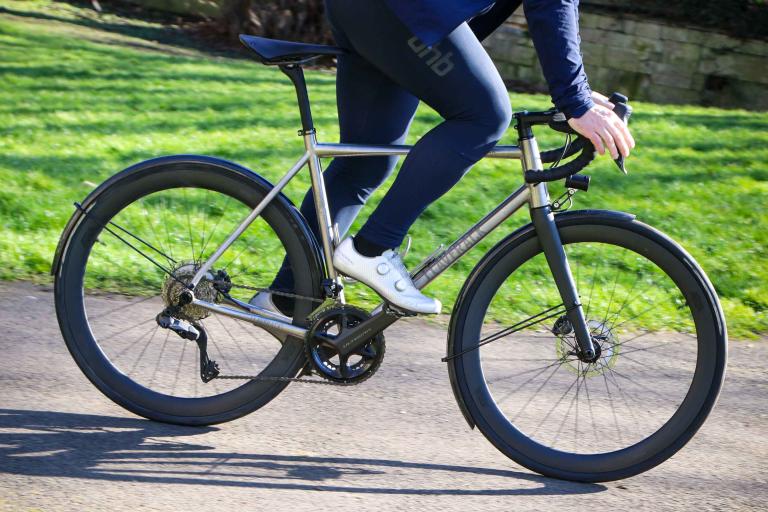


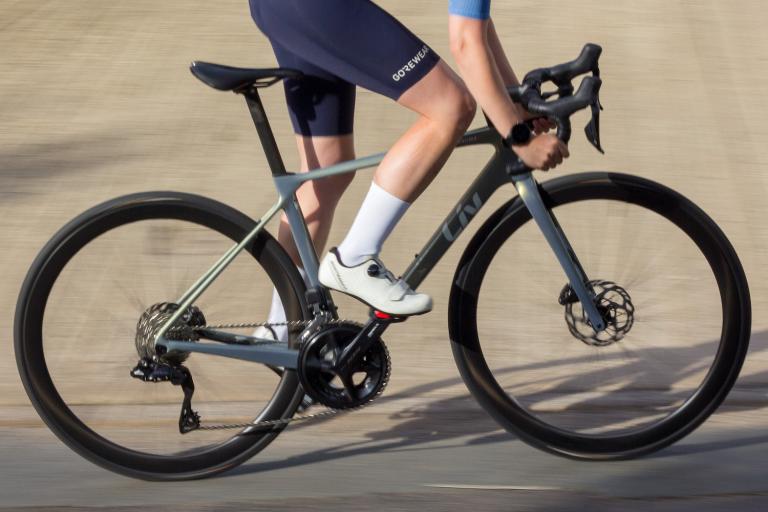
Add new comment
15 comments
Yes, feedback on the Cosine range has been pretty good so far. Well worth looking at Hunt wheels too - I've yet to hear anything bad about them.
These for a replacement wheelset look good for the money
http://www.wiggle.co.uk/cosine-23mm-alloy-clincher-disc-brake-road-wheel...
Thanks For a really good, thorough review. Based on that I went into Evans Cycles in Bristol and have ordered a Dolomite 5. It looks much better in the flesh as well as it's for use as a winter bike as the lanes around here (Stogursey) are awful when wet. Will fit 28c Continental Four Season tyres when it arrives which leads me onto asking for some advice. I would like to swap the wheelset soon and while these wheels will be okay , can you recommend a better, lighter set?
thank you.
Ian
John, from what you've said I'd definitely recommend the Dolomite
Thanks for the prompt reply, I was pretty sure the Dolomite was the right bike when I had no interest in going off road so I appreciate the confirmation.
it's crazy how oil hose brakes are only just hitting £1000 road bikes
they've been on hybrids, and obviously atb stuff for years
i got a last season bike from halfords with really sweet 1 finger stopping hydros which have lasted fine in the wet for 2 years, for just £250!
re the chainset there, that can come off and you can still sell it for about 50, then just add the 105 kit for about 30 more
Great, thorough write-up. So refreshing of Evans to actually provide weights. At the £1k mark, I'd go for the reduced 2015 Arkose 4 - hydraulics (with the 686 levers) and a 32 tooth casette and wider tyres, currently £1060.
re HT length and fit, the details of reach and stack are here -
http://images.evanscycles.com/product_document/file/ba9/f58/4b7/3191/pin...
I just looked up the Specialized Venge and Trek Emonda (Trek's 'most aggressive fit' apparently) as a reference point and the Dolomite has 23-25mm more stack in the size that has the reach that would suit me at 6'. I can find sportive geometry bikes that are a full 30mm taller stack than the Pinnacle per size, so much depends on what you're after.
Pinnacle bikes have a right fit guarantee so if after a few days riding you're not comfortable you're not stuck with the bike, we can swap it.
James at Pinnacle
I had a dolomite frame very briefly. It was fine, really a little agricultural up close but probably no worse than others. What made it a no-go for me was the collossally high head tube. To get the right top tube length I ended up riding a bike that felt comically high at the front. I know this is a general endurance thing and it won't bother most people, so just alerting potential buyers to read the size charts carefully. If youre a flat-backed racer you won't like this much I am afraid.
I have had a lot of success with another Pinnacle frame and certainly they are light and well-thought out and for the money pretty spectacular - I recommend Pinnacles to people who just want a decent bike at a reasonable price.
How does it differ from the Arkose? Looks very similar - same internal cable routing, same rear drop outs.... Is it just clearance round the tyres and the fork has an internally routed hose?
I think my Arkose 4 is lighter than what you've weighed it in at. But that's a medium and I changed the wheels for some that are about 200g lighter. Still not much in it.
Did you actually try and fit 28c tyre with fenders to conclude that it will only accept up to 25c with fenders, or did you take that from the discription on Halfords website? Judging from picture 10, 18 and 31, it looks like there's a chance 28c rubber would fit under some fenders, if installed properly.
The mudguards I had available (Tortec Reflector) definitely wouldn't have accommodated bigger tyres, particularly at the front. There's a little more space at the back. It's possible with the right set (plus the right rim and tyre) you could squeeze them in. It's an Evans bike, btw, not Halfords.
If looking to fit mudguards is the Dolomite fine or would you recommend the Arkose as you've mentioned a few issues with the mudguard fittings? I've fitted mudguards to my Trek 1.5 but even with a small 23c tyre, the clearance on the front is very tight and the tyre frequently touches the mudguards on small impacts. I'm wanting purely a road bike (will never be taking it off road) with hydraulic discs and mudguard mounts, the Dolomite bikes seem to get great reviews but the Arkose doesn't and the Dolomite is certainly more what I'm looking for.
mighty value for money
Surely this has got to be a contender for Bike Of The Year?